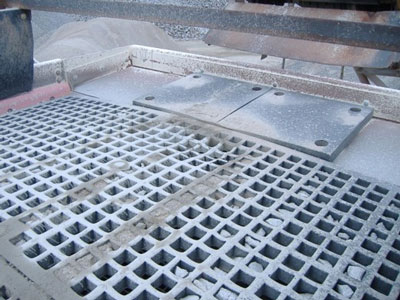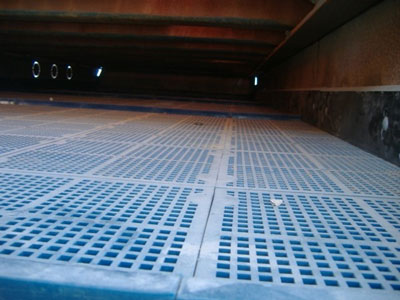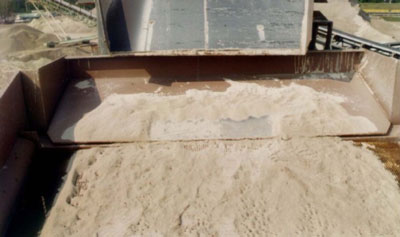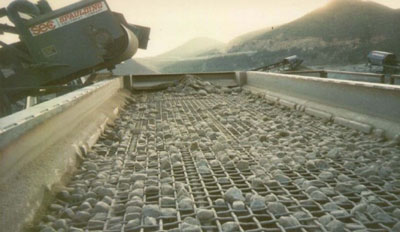The efficiency of aggregate screening systems can be greatly reduced or even completely eliminated by plugging or blinding, according to McLanahan Corp.





What is plugging and blinding?
- Plugging is the result of near-size particles becoming lodged in the openings of the screen. This creates less open area for the material to fall through.
- Blinding occurs when fine particles stick to the surface media due to moisture gradually building up over the openings.
Although there are a few methods to help prevent plugging and blinding, there is still a possibility these problems may occur. Use the solutions below to help resolve any issues you may be having with plugging or blinding in your screen.
How to Fix Screen Plugging
Plugging is much easier to fix than blinding, although many of the methods used for plugging can also be applied to blinding.
- More stroke – When there is not enough energy being forced onto the screen, large particles may get stuck in the holes. If this occurs, try increasing the amount of energy that is being put into the screen. By increasing the amount of energy, you increase the stroke, which provides the force needed to lift the particles out of the screen holes. Note: Increasing the stroke can create added stresses to the screen, thus shortening its life. Be sure that increasing the stroke is a positive economic decision because you may have to replace the screens more frequently.
- Change the shape of the holes – Sometimes the shape of the particle can cause plugging. If you notice that particles of a particular shape always get stuck in the screen openings, consider changing the shape of the holes in your screen. For example, if particles keep getting stuck in square openings, it may be beneficial to switch to a screen with octagonal holes to reduce plugging and pop out materials in the plugged holes easier.
- Different surface media – The type of screen media you are using for your application may also be a reason for plugging. Consider switching to a rubber or polyurethane screen if plugging occurs in your woven wire screen, or vice versa. Rubber panels and polyurethane screens are more durable and can push out materials more effectively when energy is put into the screen.
- Adjust the crusher setting – If particles continue to clog your screen, adjust the settings on your crusher as a means to reduce plugging. Note: Use this method as a last resort if no other methods work.
How to Fix Screen Blinding
Unlike plugging, blinding is much more difficult to fix. The moisture of the fine material is much more difficult to remove from the screen than simply pulling out large particles from the holes. Although there is more effort involved, there are still a few ways to solve the problem of screen blinding. - Increase the speed – One way that blinding can be resolved is to increase the speed of the screen. By increasing the speed, you increase the material’s acceleration and travel rate. This increase in speed can reduce blinding because it allows less time for fine material to build up on the screen. However, a disadvantage to increasing the speed is that the screen’s bearing life is decreased.
- Adjust the stroke – Just as with plugging, increasing the stroke of your screen can have advantages and disadvantages. When you increase the stroke, you decrease the opportunity for blinding to occur. However, increasing stoke also increases stress on the screen. Determine if the amount of screen wear would still leave a positive economic return for your specific application.
- Different surface media – It is important to look at the type of screen media being used. If blinding occurs, try using a screen that is more flexible and can move. With an increase in energy and a more flexible surface, fine particles are less likely to stick to the surface.
- Use ball trays – If you do not already have a ball tray in your screening system, it may be beneficial to implement one to solve the issue of blinding. Balls placed on deck beneath the screen media bounce against the screen to help prevent blinding. A ball deck is placed underneath the screen media and bounces against the screen when energy is exuded. The balls help prevent fine material from sticking to the surface and allow it to fall down the screen.
- Heated screen decks – Because fine material typically clings to the screen surface due to moisture, using a heated screen deck may help prevent this. By heating the screen deck, moisture can essentially be burnt off. This allows the fine material to flow down the screen rather than build up on it.
It is important to note that not every solution may be applicable to your screening system.
McLanahan Corp., www.McLanahan.com
